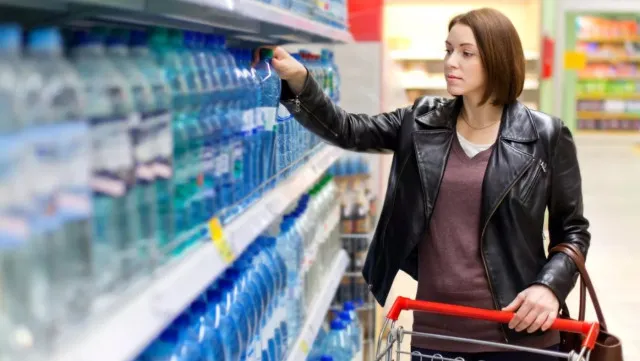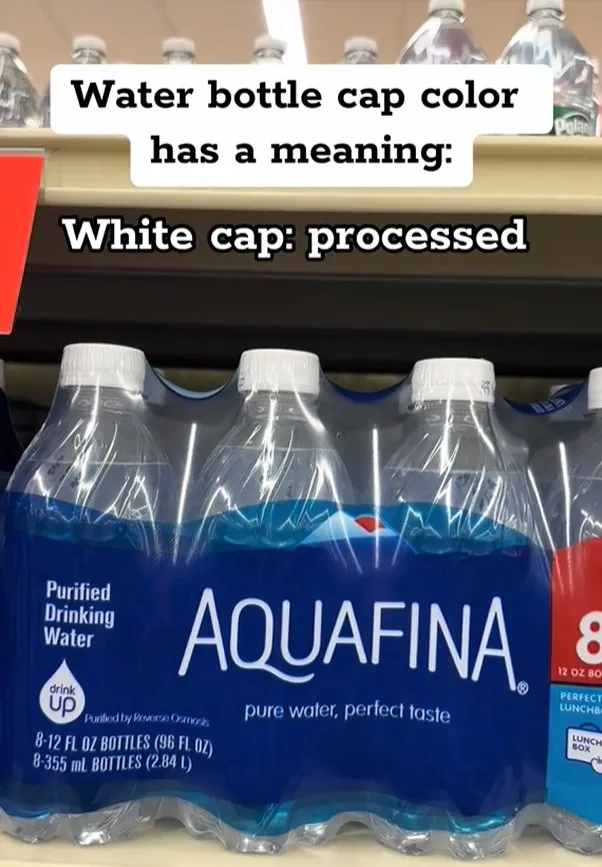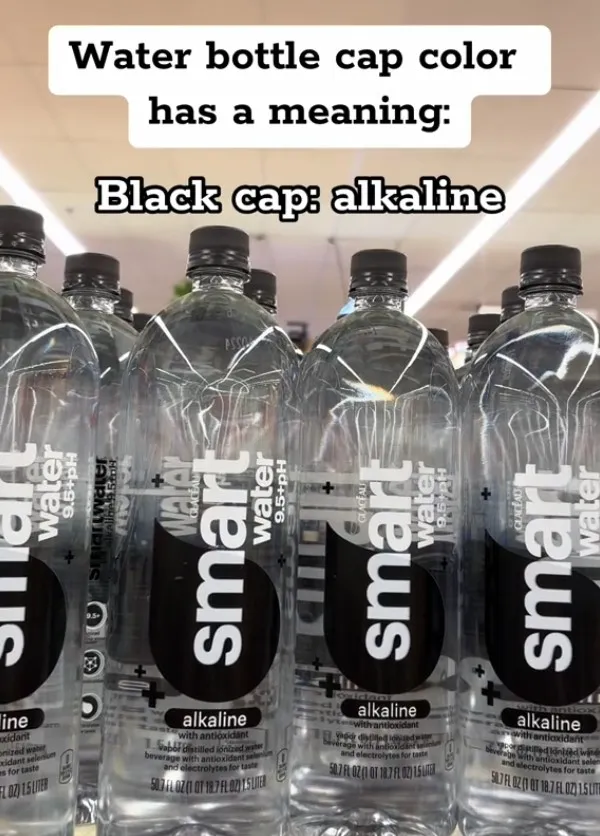Ever wondered why bottle caps come in various colors? While most of us don’t give much thought to the color of a bottle cap, manufacturers use this seemingly minor detail for more than just aesthetic purposes. The color of a bottle cap can serve as a vital tool for consumers and retailers alike, helping identify product types, features, and even ingredients. Let’s dive into the fascinating reasons behind these color-coded bottle caps and how they simplify the buying process.

Image Credit: Getty
The Meaning Behind Bottle Cap Colors
Manufacturers design bottle caps in different colors to help consumers quickly recognize the type of beverage they are purchasing. While the water bottle itself may look the same, the color of the cap provides important information about the product inside. Whether you’re grabbing a quick drink or browsing a crowded shelf, the color-coding system can help you make an informed decision at a glance.
For instance, a viral TikTok video by user @sasha.mints recently brought attention to how different cap colors indicate different types of water. According to the video:
- White cap: Signifies processed or purified water.
- Green cap: Indicates that flavor has been added to the water.
- Blue cap: Represents spring water.
- Black cap: Indicates alkaline water.
This system isn’t just about water, either. Many other beverages—like soft drinks, juices, and sparkling water—use color coding for easy identification.
Organizing and Differentiating Products
Color-coded bottle caps aren’t just beneficial for consumers; they help manufacturers and retailers as well. Using color codes allows manufacturers to differentiate between product lines and types with ease. For example, red bottle caps might be used for sparkling water, while yellow or orange caps could signify fruit-flavored beverages.
This method simplifies the manufacturing process because different cap colors can quickly distinguish between products with similar packaging. It also prevents mistakes, like mixing up flavored and unflavored water or still and sparkling drinks during the production line.
A Quick Guide for Retailers
Bottle cap colors are not only helpful for consumers but are incredibly practical for retailers too. When stocking shelves or receiving deliveries, store employees can quickly identify products by looking at the caps. This system speeds up restocking, allowing employees to organize products with minimal effort.
Let’s say a store receives a new shipment of drinks. Instead of reading each label individually, employees can sort beverages by cap color. This not only ensures that products are shelved correctly, but it also reduces the risk of misplacing similar-looking bottles. Having color-coded caps saves time and keeps store displays neat and orderly.
Color Coding for Enhanced Safety
Another critical aspect of color-coded bottle caps is safety. Some bottle cap colors indicate important details about the beverage’s contents, such as its carbonation or acidity level. For instance, red caps often signify sparkling or carbonated water, while black caps may indicate beverages with special properties, like alkaline water.

The white cap shows processed water. Image Credit: TikTok/@sasha.mints
This color-coding system helps consumers make informed choices, especially when buying beverages with specific health benefits. For people who actively avoid carbonation or prefer spring water over purified water, bottle cap colors provide an easy way to identify what they want. Additionally, it can prevent consumers from mistakenly purchasing products they may not want or need.
Variations Across Brands and Industries
It’s important to note that not all brands use the same color-coding system. While one brand may use a blue cap for spring water, another brand might use a white or even green cap for the same product type. This inconsistency can lead to some confusion, but the general idea remains the same: colors serve as a quick identification tool.
Beyond beverages, color coding is widely used across many industries. For instance, food packaging, cleaning supplies, and even household products often employ color-coding strategies to distinguish between different product variations.

The green cap indicates flavour-added water. Image Credit: TikTok/@sasha.mints
In the food industry, you’ll find that packaging colors can indicate flavor or dietary characteristics. For example, green packaging might suggest organic or plant-based options, while red might signal a spicy or bold flavor.
Color Coding’s Global Impact
Color coding isn’t just a trend in a few markets; it’s a global phenomenon. Around the world, consumers rely on visual cues like cap colors to make quick purchasing decisions. This is especially important in fast-paced environments, like grocery stores, where buyers may not have the time to read every product label.
The visual system of bottle cap color coding transcends language barriers, making it a universally effective way of communicating product information. Whether you’re in the U.S., Europe, or Asia, bottle cap colors provide an immediate visual reference for identifying the type of beverage you’re picking up.
Conclusion: More Than Just a Cap

The black cap is alkaline water. Image Credit: TikTok/@sasha.mints
The next time you open a bottle of water or grab a drink from the fridge, take a moment to notice the color of the bottle cap. What might seem like a simple design choice actually serves a practical purpose. Manufacturers use these colors to help consumers quickly identify product types, improve store organization, and convey essential details about the beverages.
Whether it’s white for purified water or blue for spring water, bottle cap colors are a clever, time-saving tool that makes life a little easier. So, the next time you’re at the store, let the colors guide you to the perfect drink!


